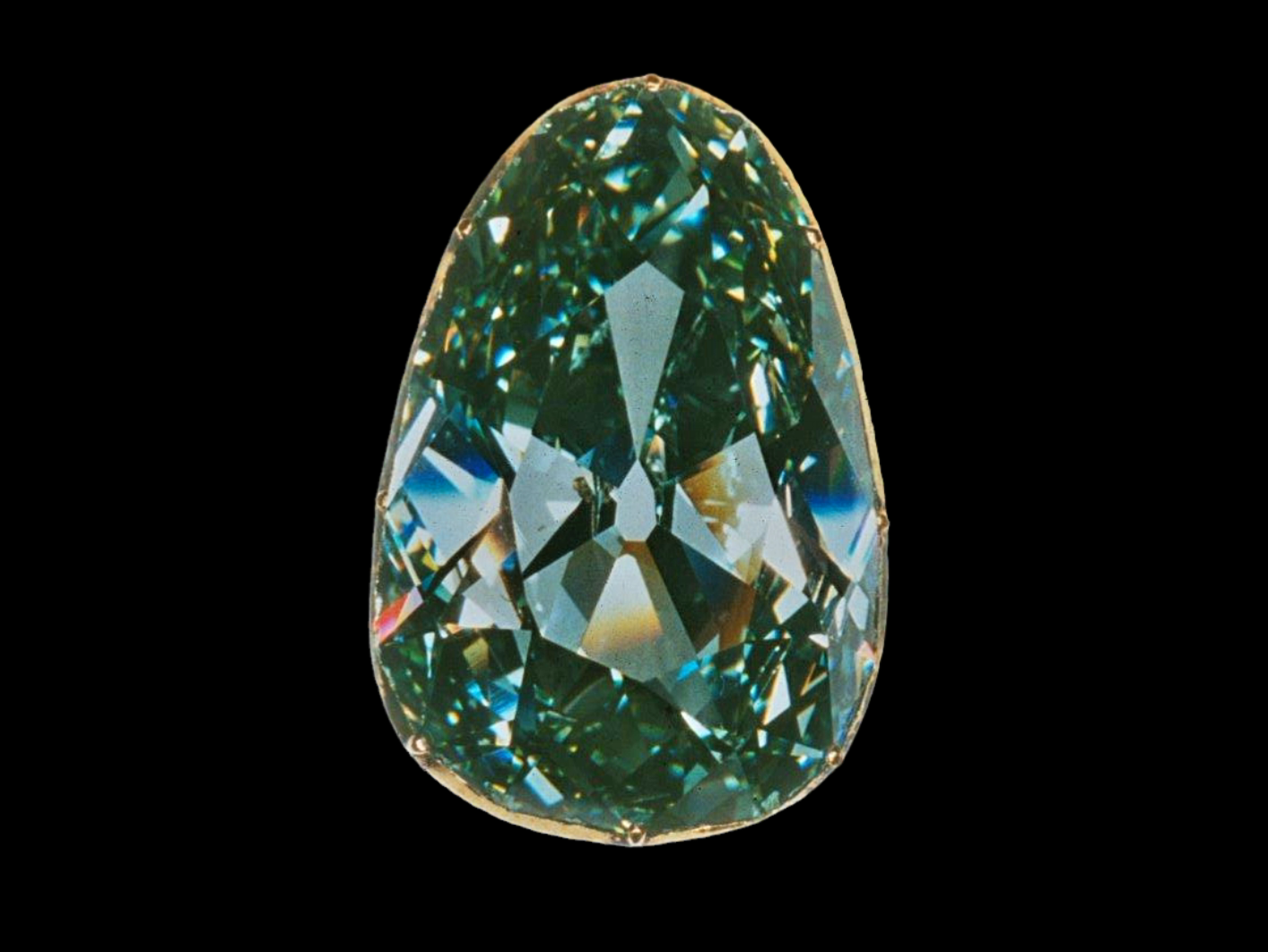The Dresden Green stands as one of the world’s most extraordinary diamonds, captivating audiences with its rare green color and historical significance. This article delves into the various facets that make this gem a marvel in the realms of gemology, history, and beyond. From its unique characteristics to its current location and hypothetical investment potential, we explore why the Dresden Green is truly a diamond like no other
Table of Contents
Historical Background
The Discovery of Dresden Green: A Gemological Marvel from Golconda
The Dresden Green diamond’s story begins in the famed Golconda mines of India, a treasure trove that has produced some of the world’s most iconic diamonds, such as the Hope Diamond and the Koh-I-Noor (both are discussed below). The Dresden Green stands out for its rare green color, attributed to natural radiation exposure over millions of years.

The European Connection: How The Dresden Green Crossed Continents
After its discovery, this unusual diamond caught the eye of European gem traders, who recognized its unique value and especially its color. It was eventually purchased by Augustus III of Poland, a significant patron of the arts and sciences. Augustus III was also the Elector of Saxony, and he decided to house the diamond in Dresden, the capital of Saxony. This is how the diamond got its name, “Dresden Green.”

A Symbol of Royalty and Power: Dresden Green’s Various Settings
Over the centuries, this gem has been set in various types of jewelry and ornaments, each more elaborate than the last. Initially, it was used as a hat ornament and was later reset as the centerpiece of a magnificent breastplate. These settings were not just aesthetic choices but were also symbolic, representing the diamond’s association with power, wealth, and nobility.

The Dresden Green in Modern Times: A Timeless Attraction
Today, the Dresden Green is one of the main attractions in the “New Green Vault” at Dresden Castle. The Green Vault contains the largest collections of treasures in the world, accumulated over centuries. It continues to captivate experts and enthusiasts alike, not just for its unique color but also for its historical significance. It is a symbol of craftsmanship of the time and a mystery of nature at the same time.
The Dark Chapter: The Theft
While the Dresden Green has mostly been associated with beauty, mystery and royalty, it has also had its share of darker moments. In 1978, the diamond was famously stolen from the New Green Vault in a highly publicized heist. Books and tv-shows have been made about this robbery. The thieves were eventually caught, and the diamond was recovered, but the incident added another layer of intrigue to its already fascinating history.
Unique Characteristics
The Color: A Natural Wonder
The most striking feature of the Dresden Green is, undoubtedly, its color. The diamond possesses a rare and natural deep green hue, which is attributed to the exposure to natural radiation over millions of years. Diamonds are formed for billions of years underground and sometimes radioactive rocks can displace the diamond’s crystal lattice. Rest assured that the diamond is not radioactive in any way, only its structure is affected in so that it creates this fascinating green color. Unlike many other colored diamonds that owe their shades to impurities, the Dresden Green’s color is remarkably uniform, making it a subject of fascination for gemologists.
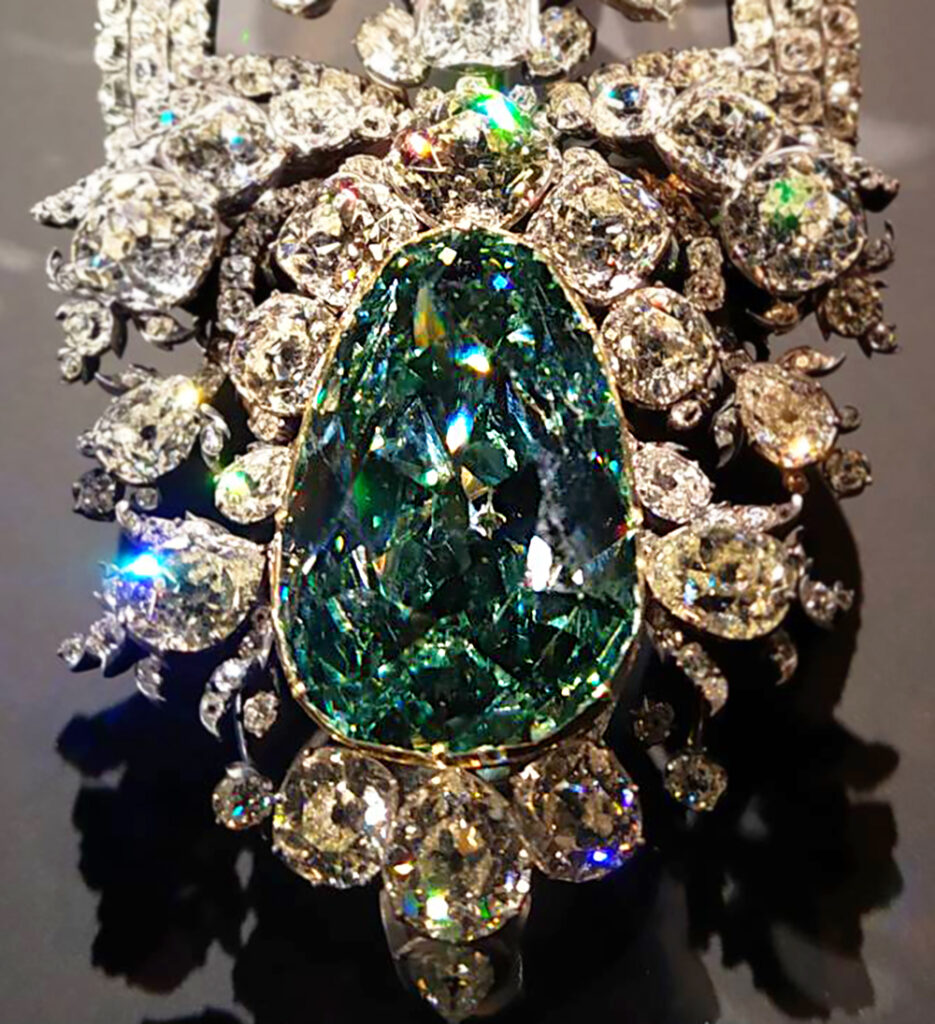
Clarity and Brilliance: A Cut Above the Rest
This gem is not just famous for its color but also for its exceptional clarity. Like many Golconda diamonds, it is classified as a Type IIa diamond, which means it contains little to no nitrogen impurities, contributing to its remarkable transparency and brilliance. Type IIa diamonds represent around 1% of mined diamonds and they are prized for their unusually pure material.
Cut and Carat: A Balanced Masterpiece
Weighing approximately 41 carats, the Dresden Green is a very big diamond. It is cut in an antique-pear shape, which not only enhances its brilliance but also complements its unique color. Contrary to modern pear-cut diamonds, antique ones generally have a rounder outline. It is undoubtedly the case that the artisan who cut and polished the Dresden in the first part of the 18th century was a true master. Antique-cut pears are rare in any size as it is not a “natural” shape for a diamond to be formed in.
Gemological Properties: A Scientific Anomaly
The Dresden Green is a marvel in the world of gemology, captivating experts and enthusiasts alike with its rare natural green color. The diamond’s unique crystal structure and inclusions offer valuable insights into the Earth’s mantle conditions where it was formed. Its optical properties, such as its unique ability to refract light, are also subjects of scientific study. Notably, the Gemological Institute of America (GIA) has conducted extensive research on this extraordinary gem, providing valuable data that has helped establish grading guidelines for green diamonds.
The Dresden Green’s Setting: An Artistic Frame
The intricate setting for the Dresden Green was commissioned by the government of Saxony to celebrate the diamond’s historical significance and to enhance its presentation. The design features a blend of classic and modern elements, including floral motifs and geometric patterns. The setting not only enhances the diamond’s natural beauty but also serves as an example of the craftsmanship of the period. After its completion by Cartier, the setting and the diamond were displayed in various exhibitions before finally being housed in the “New Green Vault” at Dresden Castle, a museum dedicated to showcasing Saxony’s royal treasures.
Comparisons with Other Famous Diamonds
The Dresden is a marvel in its own right, with a unique set of characteristics that make it exceptional. Here’s how it relates to other iconic diamonds, each of which is remarkable in its own way:
The Hope Diamond
Like its green counterpart, the Hope Diamond is another treasure from the Golconda mines in India. While the Hope Diamond is renowned for its deep-blue color, the Dresden Green captivates with its rare and natural green hue. Arguably, the green color is even rarer among diamonds than the blue color. Both diamonds have storied histories that have fascinated people for centuries. The article “The Hope Diamond: History, Myth, and Reality” delves deeper into the story of the Hope Diamond.
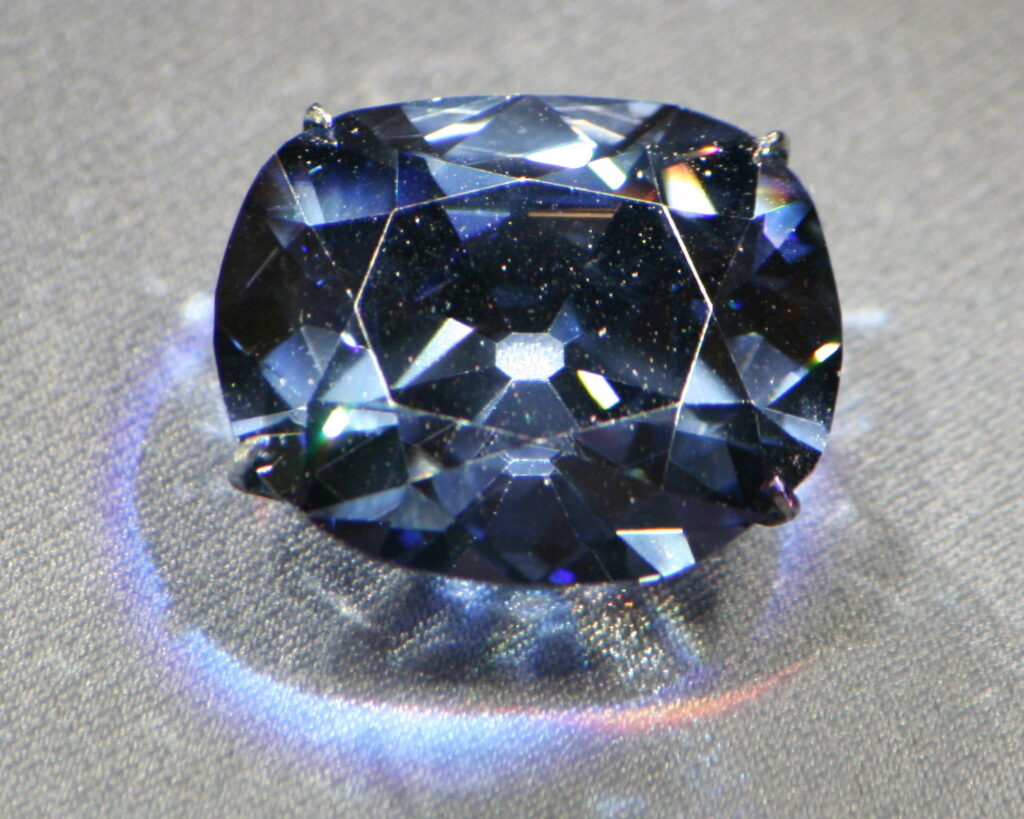
The Cullinan Diamond
The Cullinan Diamond holds the distinction of being the largest gem-quality diamond ever discovered, weighing an astonishing 3106ct. It was cut into 105 individual stones, the largest of which weighs 530.2ct. Many are part of the British crown jewels.
While the Cullinan Diamond was discovered in 1905, the Dresden has a much longer history, dating back to the early 18th century. This makes the Dresden Green not only unique for its color and gemological properties but also significant for its historical longevity. Both diamonds, each exceptional in its own way, add to the rich tapestry of the world’s most famous and extraordinary gemstones.
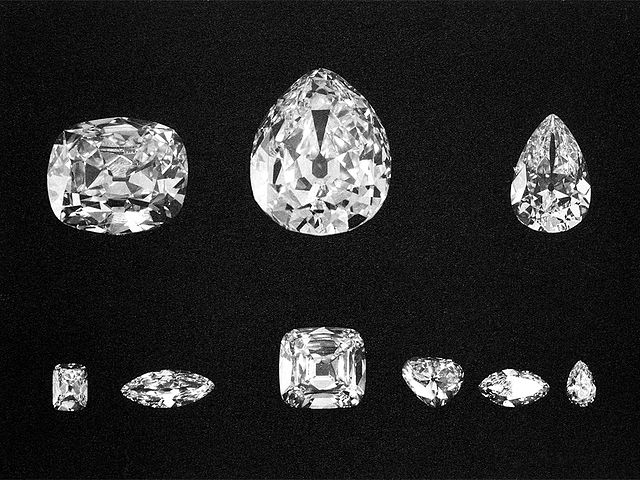
The Koh-i-Noor
The Koh-i-Noor, also originating from the Golconda mines, has a rich history and has been owned by various rulers. Contrary to the Dresden, the Koh-I-Noor is a colorless diamond (D color). It is currently part of the British Crown Jewels. The Dresden Green shares a similar historical richness, having been associated with various royal families and nobility.
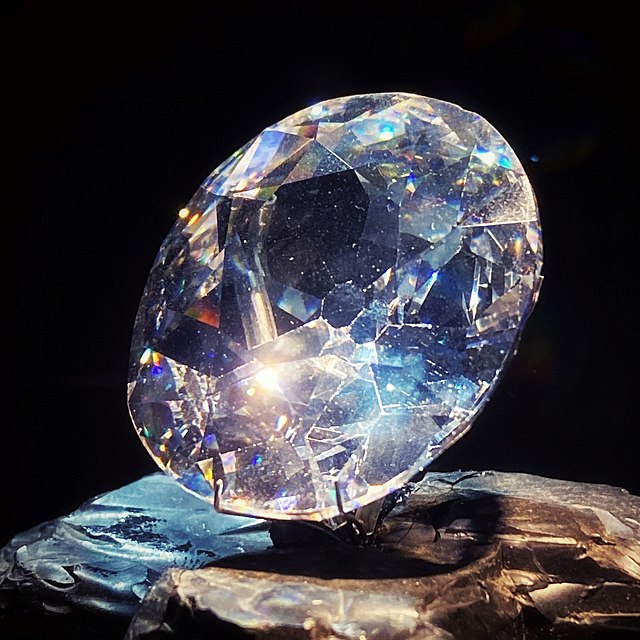
Current Ownership and Location
The diamond is currently owned by the State of Saxony and is one of the prized possessions of the “New Green Vault” at Dresden Castle in Germany. The museum is dedicated to showcasing Saxony’s royal treasures, and the Dresden Green holds a place of prominence among them.
The diamond is displayed in a secure, climate-controlled case designed to both protect the gem and optimize its visual presentation. Visitors from around the world travel to Dresden Castle specifically to see this extraordinary diamond.
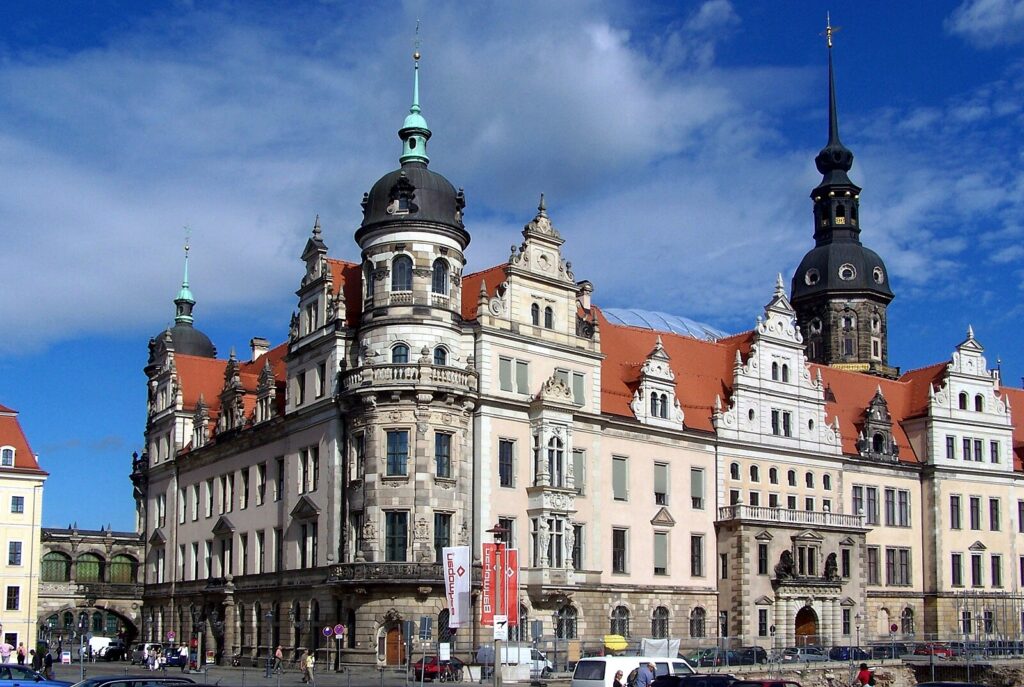
The “New Green Vault” itself is a marvel of museum design, featuring state-of-the-art security measures and a layout that allows for optimal viewing of its various exhibits. The Dresden Green is often the highlight of guided tours, and its presence significantly contributes to the museum’s status as one of the premier institutions for the study and appreciation of gemology and history.
Investment Potential: A Hypothetical Examination
Rarity and Uniqueness
The diamond’s natural green color and historical significance make it one of the rarest diamonds in the world. While it is unlikely ever to be sold, its rarity would be a significant factor in determining its value.
Historical Significance
The diamond’s long history and association with royalty and nobility would also contribute to its hypothetical value. Diamonds with a rich provenance often reach incredibly high prices at auctions as buyers often value the stone’s history and prestigious owners highly.
Market Trends
The increasing demand for colored diamonds in recent years would likely influence the Dresden Green’s value positively, should it ever come to market. The high demand for antique diamonds, especially those of high quality also plays into this scenario.
In summary, while the Dresden Green is not a typical investment asset and is unlikely ever to be sold, its unique attributes would make it an asset of immeasurable value if it were ever to become available for purchase.
Conclusion
The Dresden Green is more than just a diamond; it’s a symbol of rarity and historical richness. Its unique green hue and storied past make it a subject of fascination for gemologists, historians, and the public. While it shares the stage with other iconic diamonds, it holds a unique place due to its distinct color and historical value. Currently a prized possession of the “New Green Vault” at Dresden Castle, it serves as both a tourist magnet and an academic subject. Although it’s unlikely to ever be sold, its unique attributes make it an asset of immeasurable value in the world of gemology and beyond.
For those interested in diving deeper into the world of diamonds, you may find my other posts such as The Old Mine Cut, The History of Diamond: An In-Depth Guide, and The Old European Cut to be valuable resources.
Additional Resources
For those interested in diving deeper into the fascinating world of the Dresden Green and other extraordinary diamonds, the following resources offer comprehensive and high-quality information:
- “Diamonds: A Jubilee Celebration” by Caroline de Guitaut
- “Famous Diamonds” by Ian Balfour
- “The Definitive Guide to Colored Diamonds: From Pink Diamonds to Yellow Diamonds and All the Colors in Between” by Dina Silverberg, Alex Twersky and Christina Lee
- “The Great Diamonds of the World” by Edwin Streeter


